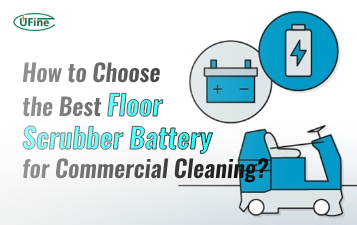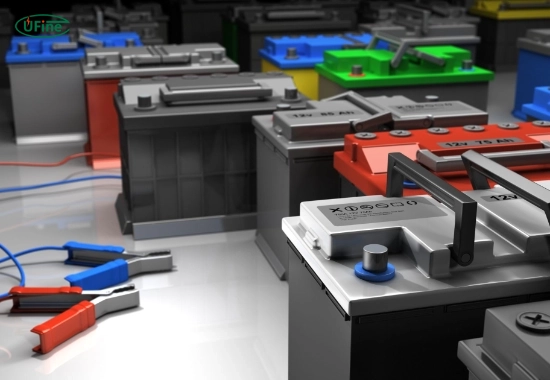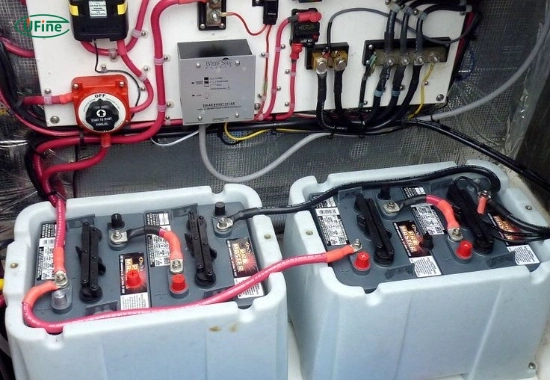How do you charge a boat battery? Charging a boat battery may seem daunting, especially for beginners, but understanding the process is crucial for maintaining your boat’s electrical system and ensuring you have reliable power on the water. This guide will walk you through everything you need to know about charging your boat battery safely and effectively.
Part 1. What is a boat battery?
A boat battery is essential to any marine vessel, providing the power to start the engine, run lights, and operate various electronics onboard. There are several types of boat batteries, each designed for specific functions:
- Starting batteries: Engineers design these batteries to deliver a quick burst of energy for starting the engine. They use thin plates for rapid discharge but don’t support deep cycling.
- Deep-cycle batteries: Deep-cycle batteries provide sustained power over extended periods, unlike starting batteries, which offer short bursts of energy. They can be discharged and recharged multiple times without significant damage, making them ideal for powering accessories like lights, pumps, and electronics.
- Dual-purpose batteries: These versatile options, which combine the features of starting and deep-cycle batteries, are suitable for smaller boats requiring quick starts and prolonged power supply.
Understanding these types will help you choose the right battery and ensure proper charging techniques. Maintaining your battery can significantly extend its lifespan and improve overall performance.
Part 2. Why is it important to charge a boat battery?
Charging your boat battery is vital for several reasons:
- Longevity: Regular charging can extend your battery’s lifespan by preventing sulfation. This common issue occurs when lead sulfate crystals form on the plates after the battery remains discharged.
- Performance: A fully charged battery ensures optimal performance of your boat’s systems. Insufficient power can lead to dim lights or malfunctioning electronics.
- Safety: An undercharged battery can lead to electrical failures, which can be dangerous while out at sea. A reliable power source is critical for navigation lights and communication devices.
Charging your battery can avoid inconvenient breakdowns and ensure a safer boating experience.
Part 3. What tools do you need to charge a boat battery?
Before you begin charging your boat battery, gather the following tools:
- Battery charger: Choose one compatible with your battery type (e.g., smart charger for deep-cycle batteries).
- Safety gloves and goggles: Protect yourself from potential acid splashes.
- Multimeter: To check the voltage of the battery before and after charging.
- Wrenches or pliers: These are used to disconnect cables if necessary.
Having these tools on hand will make the charging process smoother and safer.
Part 4. How to prepare for charging a boat battery?
Preparation is key to safely charging your boat battery. Follow these steps:
- Turn off all electronics: Ensure all devices connected to the battery are turned off.
- Disconnect the battery: Disconnect the negative (-) terminal first, followed by the positive (+) terminal. This step helps prevent short circuits.
- Inspect the battery: Look for any signs of damage or corrosion on the terminals. If necessary, clean them using a mixture of baking soda and water.
- Choose a suitable location: Charge your battery in a well-ventilated area away from flammable materials.
Part 5. How do you charge a boat battery step-by-step?
Now that you’re prepared follow these detailed steps to charge your boat battery effectively:
Connect the charger:
- Attach the positive (+) charger to the battery’s positive terminal.
- Next, if you’re confident, connect the negative (-) charger lead to a grounded metal surface on the boat or directly to the negative terminal.
Set up the charger:
- Select the appropriate voltage setting on your charger (usually 12V for most boat batteries). If you’re using a smart charger, it will automatically detect this.
- Ensure additional settings (like charging speed) are adjusted according to your battery’s specifications.
Start charging:
- Turn on the charger and monitor it periodically.
- Ensure all connections are secure; loose connections can create sparks or heat.
Monitor charging progress:
- Use a multimeter periodically to check voltage levels.
- A fully charged 12V lead-acid battery should read around 12.6V or higher; if it drops below this during charging, it may indicate an issue with the charger or the battery itself.
Finish charging:
- Once fully charged (typically indicated by an automatic shut-off on smart chargers), turn off and unplug the charger.
- Disconnect leads in reverse order: negative (-) first, then positive (+).
Reinstall the battery:
- Reconnect your battery to the boat, ensuring secure connections.
- If you have disconnected it completely, ensure it’s properly secured in its compartment before use.
Part 6. What are the key differences between charging a boat and car batteries?
While both boat batteries and car batteries serve similar functions—providing electrical power—they have distinct differences in their charging processes:
| Feature | Boat Battery | Car Battery |
| Type | Often deep-cycle or dual-purpose | Primarily starting batteries |
| Discharge Depth | Designed for deeper discharges | Typically shallow discharges |
| Charger Type | Smart chargers preferred | Standard chargers often sufficient |
| Charging Time | May take longer due to larger capacity | Generally quicker due to higher output |
| Maintenance | Requires regular electrolyte checks | Less frequent maintenance needed |
Understanding these differences helps ensure you’re using appropriate methods and tools for each type of vehicle’s needs.
Marine Battery vs. Car Battery: What are the Differences?
Part 7. Common mistakes when charging a boat battery
Avoid these common pitfalls when charging your boat battery:
- Not checking water levels: For flooded lead-acid batteries, ensure electrolyte levels are adequate before charging; low levels can cause overheating during charge cycles.
- Overcharging: Monitor charging time; overcharging can damage batteries or cause leaks due to excessive gas buildup.
- Ignoring safety precautions: Always wear protective gear and work in well-ventilated areas to avoid inhaling harmful gases released during charging.
Being aware of these mistakes can enhance safety and efficiency during charging.
Part 8. Tips for maintaining your boat battery
To ensure longevity and reliability from your boat battery:
- Regularly check water levels in flooded batteries; top up with distilled water as needed.
- Clean terminals periodically with baking soda and water to prevent corrosion.
- Store batteries in a cool, dry place during off-seasons; extreme temperatures can reduce lifespan.
These tips will keep your boat’s electrical system in top shape year-round.
Part 9. FAQs
-
What type of charger should I use for my boat battery?
Use a charger compatible with your specific boat battery. Smart chargers, with their automatic shut-off features, are often recommended for deep-cycle batteries. -
Can I charge my boat battery while it’s still connected?
While it’s possible with some chargers designed for this purpose, it’s generally safer to disconnect it first to avoid electrical issues. -
How do I know when my boat battery is fully charged?
A fully charged 12V lead-acid battery should read around 12.6V or higher on a multimeter; consult your charger’s indicators if using an automatic model. -
Is it safe to leave my charger plugged in overnight?
Using an automatic or smart charger that stops charging when full is generally safe; however, if possible, always monitor it. -
What should I do if my boat battery won’t hold a charge?
Suppose your battery consistently fails to charge after proper maintenance and care. In that case, it may be time for replacement or professional testing.
Related Tags:
More Articles

How to Choose the Best Floor Scrubber Battery for Commercial Cleaning?
Selecting the ideal floor scrubber battery ensures a long runtime, rapid charging, and minimal maintenance for efficient commercial cleaning operations.
Battery for Blower vs Battery for Leaf Vacuum: Which One Should You Choose?
Battery for blower vs leaf vacuum—learn the key differences in power, fit, and runtime to choose the right battery for your outdoor tool needs.
How to Choose the Right Battery for Blower?
Choosing the right blower battery? Consider voltage, capacity, chemistry & usage. This guide helps match the best battery for peak performance.
How to Choose the Best Insulated Battery Box for Lithium Batteries?
Choosing the Best Insulated Battery Box for Lithium Batteries? Discover key factors such as size, material, and safety for optimal protection and performance.
7 Critical Elements on a Lithium Battery Shipping Label
What must be on a lithium battery shipping label? Learn 7 key elements to ensure safety, legal compliance, and correct handling across all transport modes.






